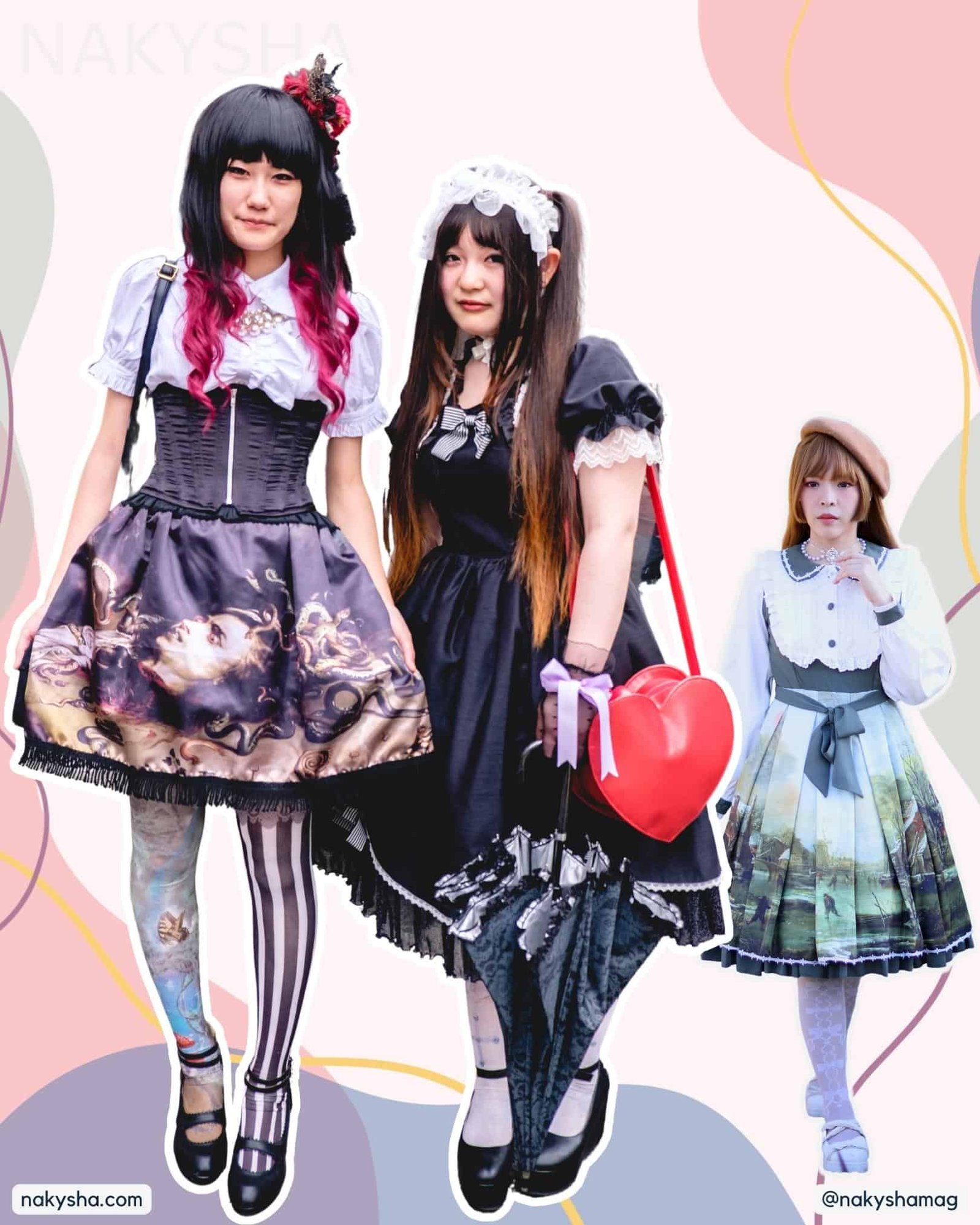Lolita fashion is a style of dress that has been growing in popularity over the last decade. It originated in Japan in the late 1970s and has since spread across the world.
Lolita Fashion has been characterized by a constant reimagining and reinterpretation of the style while still maintaining its core values of modesty, femininity, and individuality.
This article will provide you with an overview of Lolita fashion so that you can get a better understanding of what it is, where it comes from, why it’s so popular, and how to wear it.
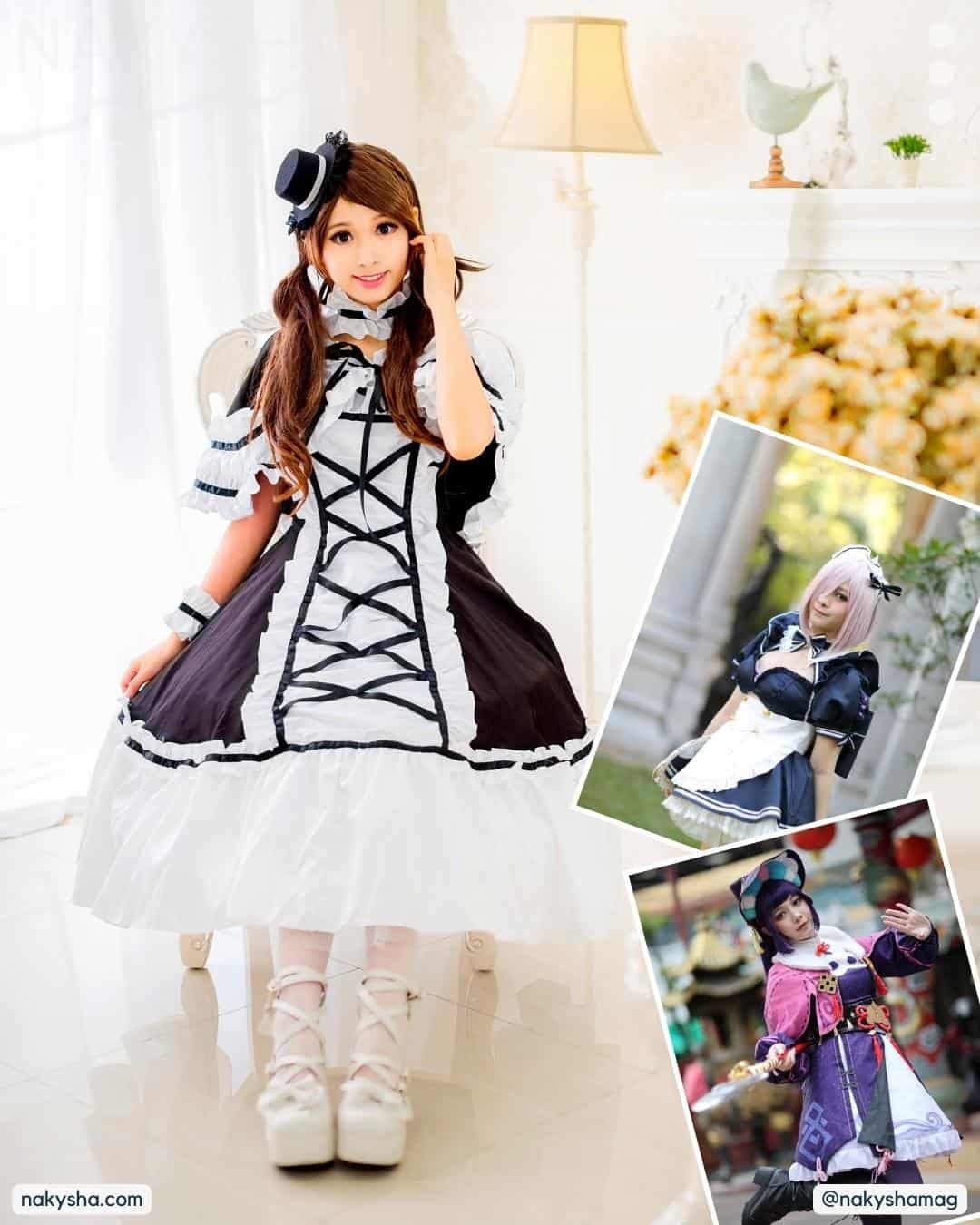
What is Lolita Fashion?
Lolita Fashion is a style of Japanese street fashion that originated in the 1980s and has since become a worldwide subculture. The fashion is characterized by its doll-like, Victorian-inspired aesthetic, emphasizing modesty and femininity.
Lolita Fashion typically comprises a dress or skirt that falls below the knee, often with a dress for added volume and a blouse with puffed sleeves or lace detailing.
Accessories such as headdresses, knee-high socks or stockings, gloves, and parasols are also commonly worn to complete the look.
There are several sub-styles of Lolita Fashion, including sweet, gothic, classic, and punk, each with unique interpretations of the overall aesthetic.
Fashion is often associated with anime and manga fandom but has also gained a following among people who enjoy the style.
The Meaning of Lolita Fashion
The term “Lolita” in Lolita Fashion is derived from the title of Vladimir Nabokov’s novel, “Lolita,” which tells the story of a middle-aged man’s obsession with a young girl.
However, it’s important to note that the Lolita Fashion style has no association with the novel’s themes or any promotion of inappropriate behavior toward minors.
Instead, the term “Lolita” in the context of fashion refers to a more innocent and romanticized image of girlhood, influenced by Victorian and Rococo-era clothing.
The style is characterized by modesty, femininity, and childlike innocence, often incorporating pastel colors, lace, and frills to create a doll-like appearance.
The Lolita Fashion subculture emphasizes creativity and self-expression through clothing, with many individuals incorporating their style and interests into their outfits.
Despite its origins in Japan, Lolita Fashion has gained popularity worldwide and continues to evolve and adapt to new trends and cultural influences.
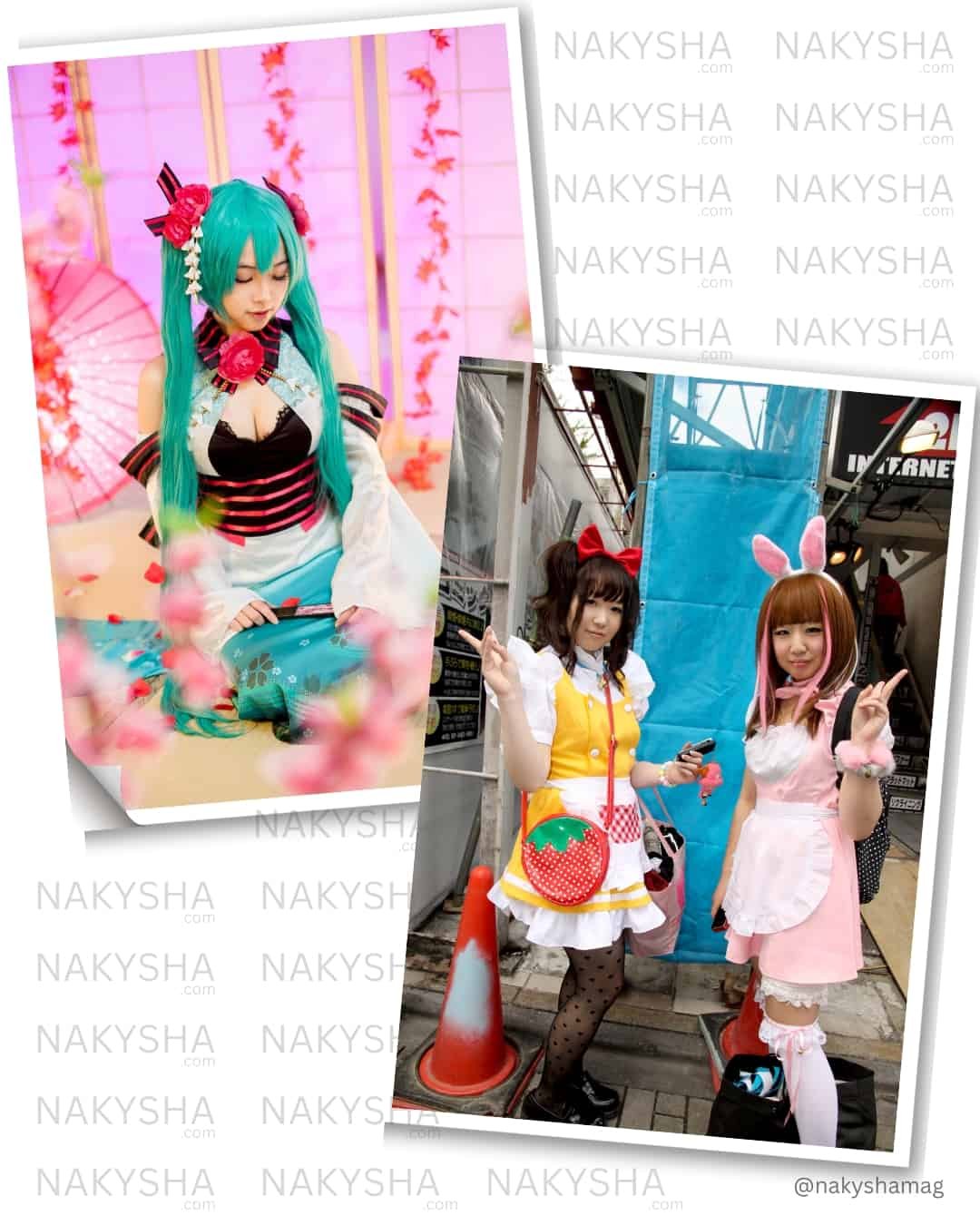
Types of Lolita Fashion
There are several types of Lolita Fashion, each with unique characteristics and influences. Here are some of the most popular types of Lolita Fashion:
Sweet Lolita: This type of Lolita Fashion is characterized by pastel colors, cute prints such as animals, fruits, and flowers, and an overall “sweet” and playful aesthetic.
Gothic Lolita: This type of Lolita Fashion incorporates darker colors, such as black, purple, and red, and often features elements of Gothic fashion, such as crosses, lace, and chains.
Classic Lolita: This type of Lolita Fashion takes inspiration from Victorian and Rococo-era clothing, featuring more muted colors such as navy, burgundy, and ivory and incorporating elements such as ruffles, lace, and bows.
Punk Lolita: This type of Lolita Fashion incorporates punk influences such as studs, chains, and plaid patterns, while still maintaining the overall Lolita aesthetic.
Sailor Lolita: This type of Lolita Fashion features nautical-inspired elements such as sailor collars and stripes, often incorporating a blue and white color palette.
Qi Lolita: This type of Lolita Fashion takes inspiration from traditional Chinese clothing, featuring elements such as Mandarin collars, embroidery, and silk fabrics.
Hime Lolita: This type of Lolita Fashion takes inspiration from princesses and royalty, featuring elegant and regal elements such as crowns, tiaras, and capes.
These are just a few examples of the types of Lolita Fashion, and there are many other sub-styles and variations within the subculture.
What is the Origin of Lolita Fashion?
The origin of Lolita Fashion can be traced back to Japan in the 1970s and 1980s when young women began adopting Victorian-era clothing as a form of rebellion against the mainstream fashion of the time.
The Lolita Fashion subculture began to gain more mainstream attention in the 1990s, with the emergence of popular Japanese fashion magazines such as “Fruits” and “Gothic & Lolita Bible,” which featured Lolita Fashion heavily.
Today, Lolita Fashion has a dedicated following worldwide, with numerous Lolita Fashion events and communities in countries such as the United States, Canada, Australia, and Europe.
The style has also continued to evolve and incorporate new influences and trends while maintaining its core emphasis on modesty, femininity, and childlike innocence.
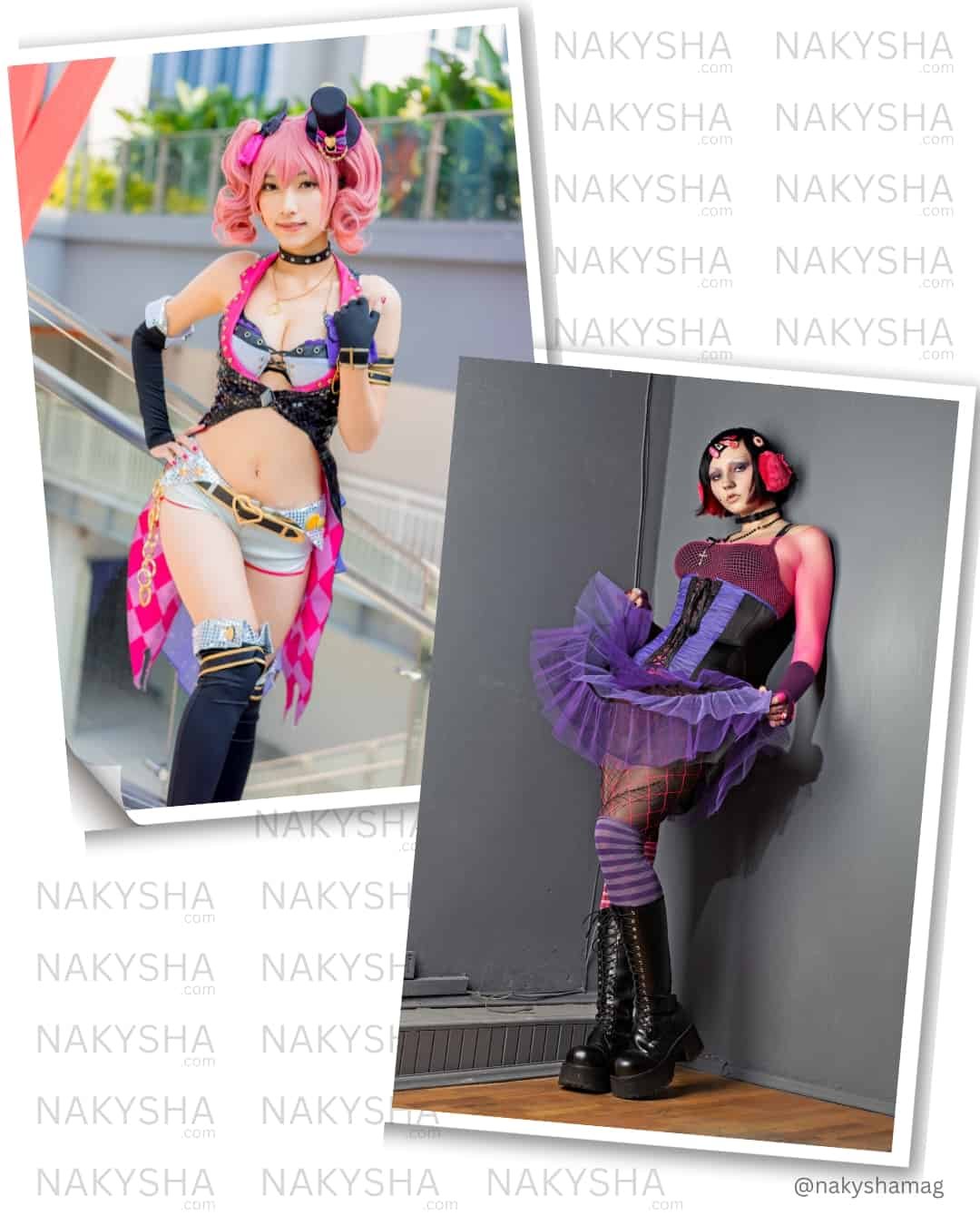
The subculture continued to grow and gain popularity throughout the 2000s, spreading beyond Japan and becoming a global phenomenon.
The Sources of Inspiration
Lolita Fashion draws inspiration from various sources, including historical fashion, popular culture, and personal interests.
Here are some of the most common sources of inspiration for Lolita Fashion:
Victorian and Rococo fashion: The Lolita Fashion aesthetic is heavily influenced by the clothing and styles of the Victorian and Rococo eras, with elements such as corsets, frills, lace, and dresses being standard features.
Dolls and toys: The doll-like appearance of Lolita Fashion is often inspired by dolls and other toys, with many Lolita Fashion enthusiasts incorporating doll-like elements into their outfits, such as oversized bows and accessories.
Pop culture: Lolita Fashion has been influenced by various forms of pop culture, including anime, manga, and visual kei music. Many Lolita Fashion enthusiasts also fan popular franchises such as Disney, Harry Potter, and Sailor Moon.
Nature: Some Lolita Fashion sub-styles, such as Sweet Lolita, incorporate elements of nature, such as flowers, animals, and fruits, into their designs.
Personal interests: Lolita Fashion enthusiasts often incorporate their interests and hobbies into their outfits, such as books, music, and art.
The sources of inspiration for Lolita Fashion are vast and diverse, with each individual bringing unique influences and interests to the subculture.
Popular Lolita Fashion Designers
Many talented Lolita Fashion designers have gained popularity within the subculture.
Here are some of the most well-known and respected Lolita Fashion designers:
Baby, the Stars Shine Bright: One of the oldest and most well-known Lolita Fashion brands, Baby, the Stars Shine Bright was founded in 1988 and is known for its elegant, high-quality designs.
Angelic Pretty: Established in 2001, Angelic Pretty is known for its cute and playful Sweet Lolita designs, often featuring pastel colors and whimsical prints.
Metamorphose Temps de Fille: Founded in 1997, Metamorphose Temps de fille is known for its Classic Lolita designs, which often feature muted colors and elegant, vintage-inspired elements.
Atelier-Pierrot: Known for its Gothic Lolita designs, Atelier-Pierrot incorporates elements of Gothic fashion, such as lace, ruffles, and corsets.
Moi-même-Moitié: Founded by the influential Gothic Lolita musician Mana, Moi-même-Moitié is known for its dark, ethereal designs that incorporate elements of Gothic and Victorian fashion.
Alice and the Pirates: A sub-brand of Baby, the Stars Shine Bright, Alice and the Pirates is known for its elegant, pirate-inspired designs that incorporate elements of Classic Lolita and Gothic Lolita.
These are just a few examples of the many talented Lolita Fashion designers out there and many other brands and designers within the subculture.
Why is Lolita Style Still Popular?
Lolita Fashion has remained popular for several reasons:
Unique and distinctive style: Lolita Fashion is a unique and distinctive style that stands out from mainstream fashion. Its emphasis on modesty, femininity, and childlike innocence is a refreshing change from the often-revealing and sexualized clothing in mainstream fashion.
Strong community: Lolita Fashion has a strong community of enthusiasts who support and encourage each other. This sense of community fosters a feeling of belonging and acceptance for those who might feel out of place in mainstream fashion.
Emphasis on quality and craftsmanship: Lolita Fashion is known for its high-quality materials and attention to detail, with many designs incorporating handmade elements. Those within the subculture highly value this emphasis on quality and craftsmanship.
Creative expression: Lolita Fashion allows for a high degree of creative expression, with enthusiasts often incorporating their interests and hobbies into their outfits. This encourages individuality and self-expression within the subculture.
Timeless appeal: The Victorian and Rococo influences in Lolita Fashion give it a timeless appeal that transcends trends and fads. As a result, it has remained popular over the years, with new generations discovering and embracing the style.
Lolita Fashion offers a unique, creative, and supportive community that values quality, craftsmanship, and individuality.
These values, combined with its distinctive and timeless style, have helped to keep Lolita Fashion popular over the years.
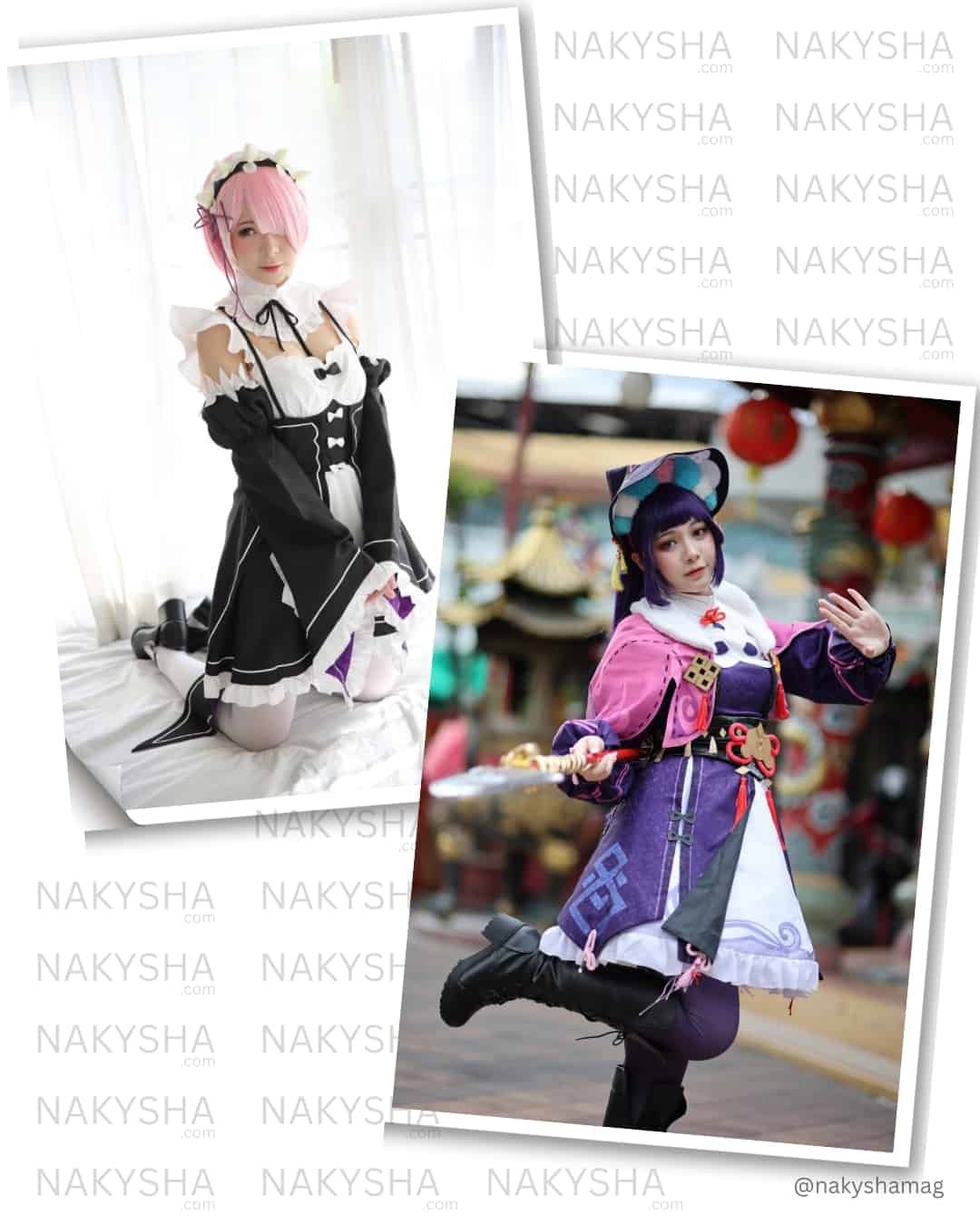
The Evolution of Lolita Fashion
Lolita Fashion has evolved and changed since its inception in the 1980s. Here are some of the critical stages of its evolution:
Early years: The Lolita Fashion style first emerged in Japan in the 1980s, with the term “Lolita” initially referring to the childlike innocence of the style rather than any connotations of sexuality.
Victorian and Rococo fashion heavily influenced early designs, emphasizing modesty and femininity.
Introduction of sub-styles: In the 1990s, Lolita Fashion began to diversify into different sub-styles, such as Sweet Lolita, Gothic Lolita, and Classic Lolita.
Each sub-style had distinctive elements and motifs, allowing enthusiasts to express their tastes and preferences.
Global expansion: In the early 2000s, Lolita Fashion began to spread beyond Japan, with enthusiasts in other countries embracing the style and creating their local communities.
This helped to diversify the style further and allowed for more international collaboration among designers and enthusiasts.
Integration of modern elements: In recent years, Lolita Fashion has begun incorporating more modern elements into its designs, such as pop culture references and streetwear influences.
This has helped keep the style fresh and relevant while maintaining its core values and aesthetics.
Emphasis on sustainability and ethical production: In response to concerns about fast fashion’s environmental and social impacts, many Lolita Fashion enthusiasts and designers have begun to emphasize sustainability and ethical production.
This has led to a greater focus on high-quality materials, handmade elements, and fair labor practices within the subculture.
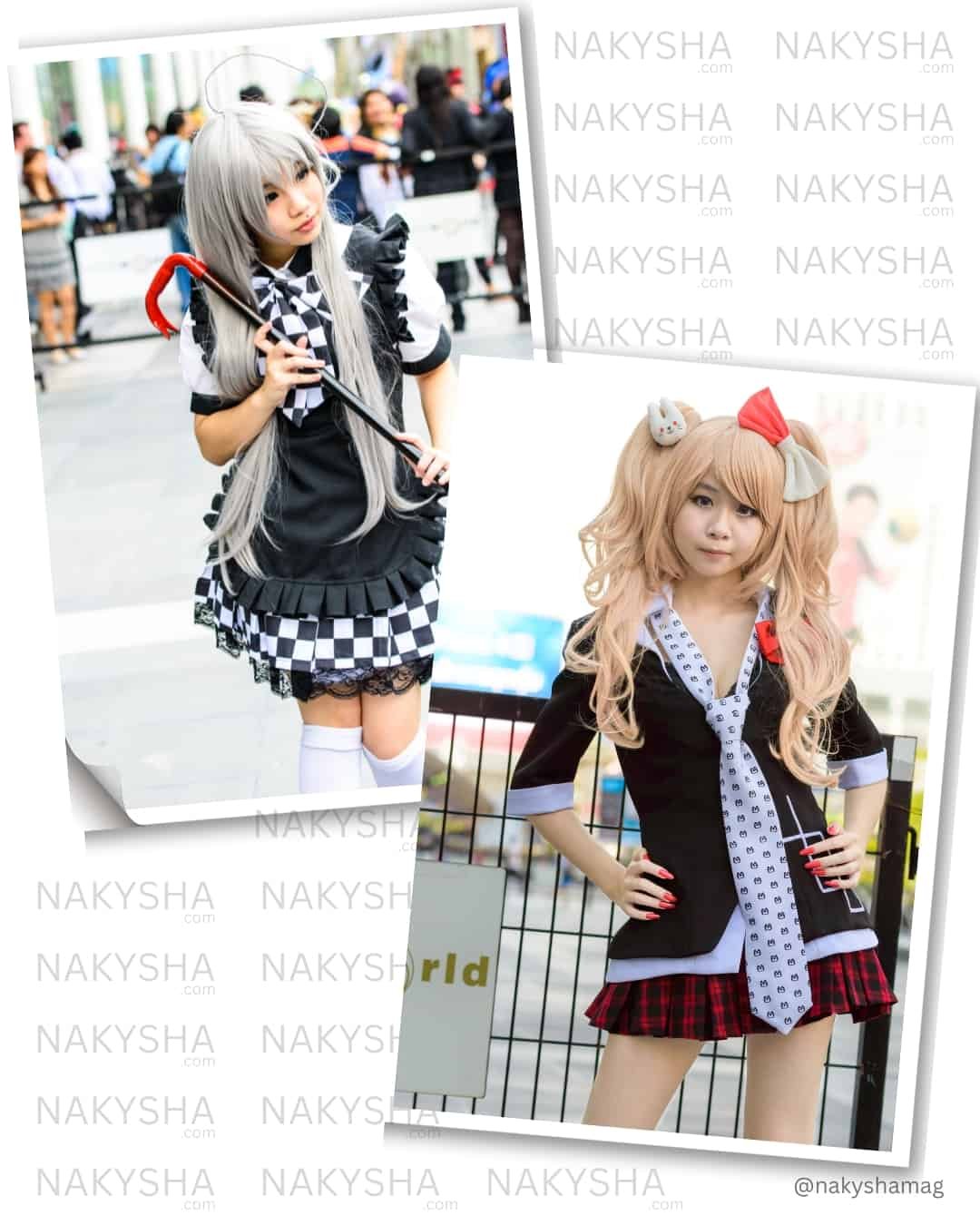
What are the Characteristics of Lolita Fashion?
Lolita Fashion is characterized by several key features and aesthetics, including:
Modest silhouettes: Lolita Fashion emphasizes modesty, with dresses and skirts typically falling below the knee and blouses featuring high collars and long sleeves.
Feminine aesthetics: Lolita Fashion is highly feminine, with designs featuring ruffles, lace, bows, and other delicate embellishments. Pastel colors and floral prints are also standard in Sweet Lolita designs.
Vintage and historical influences: Lolita Fashion draws inspiration from historical fashion, mainly Victorian and Rococo styles. Designs often feature corsets, dresses, and other elements associated with these historical eras.
Attention to detail: Lolita Fashion is known for its attention to detail, with many designs incorporating handmade elements such as embroidery, lacework, and beading.
Variety of sub-styles: Lolita Fashion includes several sub-styles, each with unique aesthetics and motifs. Some of the most well-known sub-styles include Sweet Lolita, Gothic Lolita, Classic Lolita, and Wa Lolita.
Accessories: Accessories are an essential part of Lolita Fashion, with enthusiasts often incorporating bows, headbands, parasols, and other items into their outfits. Shoes and stockings also play a significant role in completing the overall look.
The Colors of Lolita Fashion
Lolita Fashion incorporates a wide range of colors, but some of the most common and popular colors include:
Pastels: Soft and delicate pastel shades are a hallmark of Sweet Lolita designs. Popular pastel colors in Lolita Fashion include pink, lavender, baby blue, and mint green.
Black: Black is a popular color in Gothic Lolita designs, with many designs featuring black dresses or skirts paired with white blouses and dark accessories.
White: White is another popular color in Lolita Fashion, often used with other pastels or bright colors to create a more sophisticated or elegant look.
Red: Red is a bold and striking color often used in Classic Lolita designs. It can be paired with black or white to create a dramatic contrast or combined with warm colors such as gold or brown.
Blue: Blue is a versatile color in Lolita Fashion, with light and dark shades commonly used in designs. Light blue is often used in Sweet Lolita designs, while dark blue can be used in Classic or Gothic designs.
Lolita Fashion embraces many colors, but pastels, black, white, and red are some of the most common and recognizable colors in style.
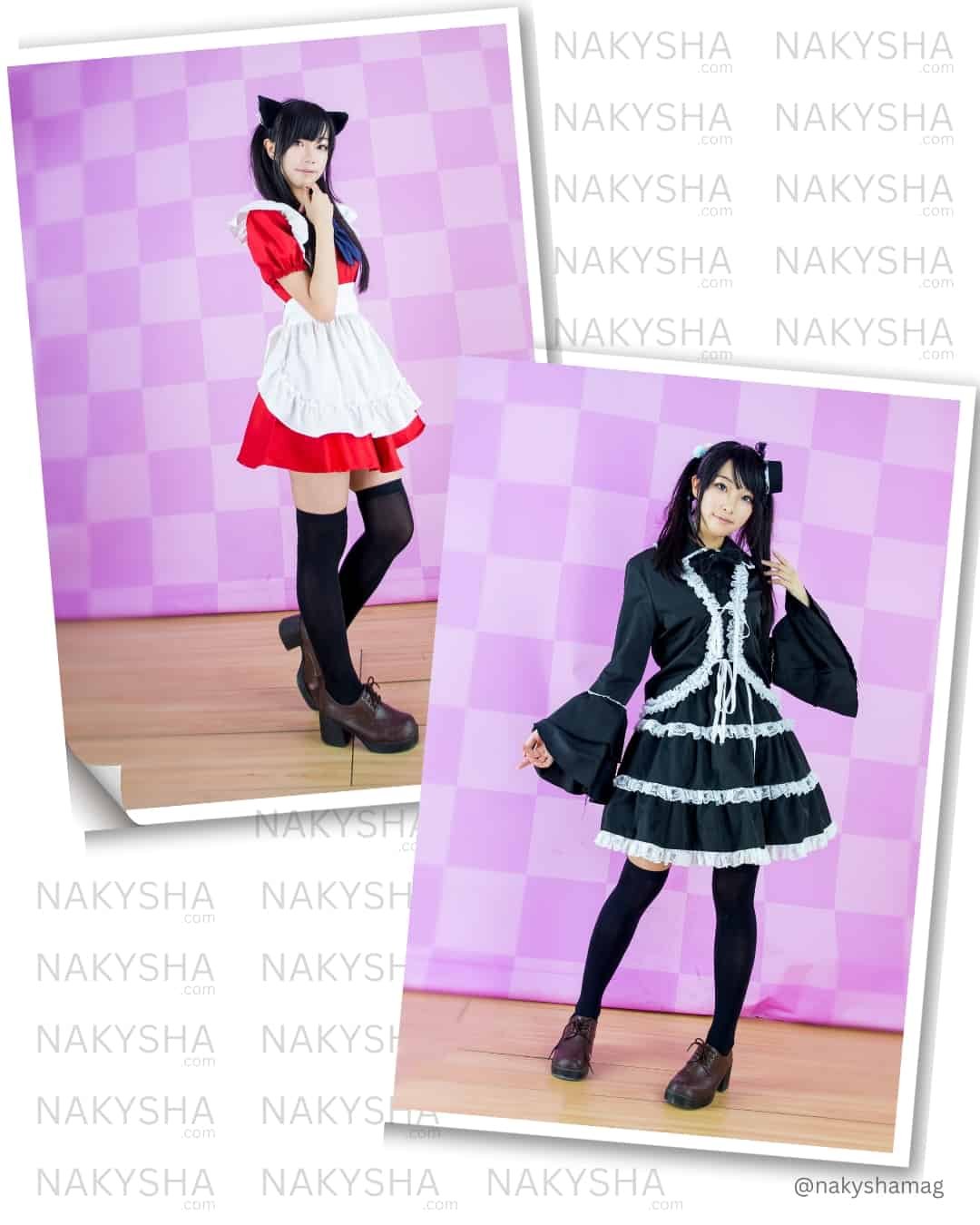
How to Dress Lolita Style?
Dressing in Lolita Fashion style can be a complex and highly individualized process, but here are some basic steps to get started:
Choose a sub-style: There are several sub-styles within Lolita Fashion, each with its own unique aesthetic and motifs.
Some of the most well-known sub-styles include Sweet Lolita, Gothic Lolita, Classic Lolita, and Wa Lolita.
Choose a sub-style that resonates with you and start exploring the design elements associated with that style.
Select a dress or skirt: Lolita Fashion dresses and skirts are typically packed, with a modest hemline that falls below the knee.
Look for a dress or skirt with ruffles, lace, or other delicate embellishments that reflect your chosen sub-style.
Consider the color and pattern of the fabric as well, keeping in mind the overall aesthetic you want to achieve.
Choose a blouse or top: A high-collared, long-sleeved blouse is a Lolita Fashion staple.
Look for a blouse that complements the design of your dress or skirt, and consider adding lace or other embellishments to create a cohesive look.
Add accessories: Accessories are an essential part of Lolita Fashion and can include bows, headbands, gloves, parasols, and more.
Choose accessories that complement your outfit and sub-style, and consider adding jewelry or other accents to complete the look.
Wear appropriate footwear: Lolita Fashion footwear typically includes Mary Jane shoes or boots with chunky heels.
Look for shoes that complement the design of your outfit and provide a comfortable and practical option for walking.
Style your hair and makeup: Lolita Fashion hairstyles are typically elaborate and feminine, with curls, braids, and elaborate updos being common choices. Makeup is typically soft and natural, enhancing natural features and creating a youthful, innocent look.
Dressing in Lolita Fashion style requires attention to detail and a willingness to experiment and express your style. Start with the basics and build your outfit, incorporating accessories, makeup, and hairstyles that reflect your chosen sub-style and personal preferences.
Lolita Fashion Outfits
Lolita Fashion outfits typically comprise several vital elements that create a cohesive and highly stylized look. While there are many variations and sub-styles within Lolita Fashion, some of the common elements that make up a Lolita outfit include:
Dress or skirt: A complete, knee-length dress or skirt is a staple of Lolita Fashion. The skirt is typically gathered or pleated and may feature lace or other delicate embellishments.
Blouse or top: A high-collared blouse with long sleeves is a common choice for Lolita Fashion outfits. The blouse may be plain or feature lace, ruffles, or other embellishments that complement the design of the dress or skirt.
Petticoat: A petticoat is worn underneath the skirt to add volume and give the outfit its distinctive shape. The dress may be visible beneath the skirt or hidden from view.
Footwear: Mary Jane shoes or boots with chunky heels are common choices for Lolita Fashion outfits. The shoes may be plain or feature embellishments that complement the design of the outfit.
Lolita Fashion outfits are highly stylized and often feature delicate embellishments, intricate patterns, and various colors. The wearer’s sub-style of Lolita Fashion chosen will dictate many of the specific design elements and motifs used in the outfit.
Lolita Fashion Makeups
Lolita fashion is known for its unique and whimsical aesthetic, and the makeup that complements this style is no exception. Here are some tips on how to create Lolita fashion makeup looks:
Start with a fresh, clean face: Apply a lightweight moisturizer to your skin to create a smooth base for your makeup.
Use a light foundation or BB cream to even out your skin tone: Lolita makeup focuses on a natural and youthful look, so avoid heavy contouring or dramatic shading.
Choose a soft and natural-looking blush: In a shade that complements your skin tone. Apply the blush to the apples of your cheeks for a cute and rosy look.
Choose a soft, neutral eyeshadow palette: Shades like pink, lavender, and pale blue work well for Lolita fashion makeup. Apply the eyeshadow to your eyelids and blend well.
Use a liquid eyeliner to create a thin, delicate line along your upper lash line. This will help make your eyes appear larger and more defined.
Apply mascara to your upper and lower lashes to add volume and length.
Finish off the look with a soft and natural-looking lip color. Choose a shade that complements your skin tone and gives you a cute and feminine look.
Tips:
Avoid heavy contouring, dramatic shading, and bold colors, and focus on creating a youthful and playful look that complements your Lolita fashion style.
Lolita Fashion Hairstyles
Lolita fashion is known for its unique and whimsical aesthetic, and the hairstyles that complement this style are no exception.
Here are some tips on how to create Lolita fashion hairstyles:
Pigtails: One of the most iconic Lolita hairstyles is pigtails. Part your hair down the middle and create two high ponytails. Tie each ponytail with a ribbon or bow, and curl the ends of the hair for a cute and playful look.
Curls: Soft, curly hair is another popular Lolita hairstyle. Use a curling iron to curl your hair in loose, voluminous waves. Add a hair accessory like a hairband, bow, or flowers to complete the look.
Braids: Braids are a classic hairstyle that works well with Lolita fashion. Create two French braids that start at the crown of your head and extend down the back. Tie each braid with a ribbon or bow, and curl the ends for a cute and playful look.
Buns: Buns are another popular hairstyle for Lolita fashion. Create two high buns on either side of your head, and add hair accessories like bows, flowers, or even a mini top hat.
Half-up, Half-down: A half-up, half-down hairstyle is a versatile option for Lolita fashion. Use a hairband or ribbon to tie the top half of your hair back, leaving the bottom half down.
Add curls or waves to the bottom half of your hair for a cute and playful look.
Lolita Fashion Accessories
Lolita fashion is known for its elaborate and whimsical accessories that add to the overall aesthetic of the style. Here are some of the most popular Lolita fashion accessories:
Headwear: Headwear is an essential part of Lolita fashion. Popular options include headbands, bows, bonnets, berets, and mini top hats. These accessories often feature lace, bows, and ribbons, and are worn at an angle to add a playful touch to the outfit.
Socks and tights: Lolita fashion often features knee-high socks, ankle socks, or tights with lace or other decorative details. These accessories add a playful touch to the outfit and can be paired with shoes or boots to complete the look.
Shoes: Lolita fashion shoes are often Mary Jane-style or feature a strap with a buckle. They can be flat or heeled and are typically made from materials like leather, suede, or velvet. Shoes often feature bows, ribbons, or lace to complement the rest of the outfit.
Bags: Lolita fashion bags are typically small and often feature a bow, lace, or other decorative details. Popular options include tote bags, handbags, and crossbody bags.
Jewelry: Lolita fashion jewelry often features bows, lace, pearls, and other whimsical details. Popular options include chokers, bracelets, earrings, and rings.
Parasols: Parasols are a popular accessory in Lolita fashion, often featuring lace or ruffles to complement the outfit. They can be used to shield from the sun or rain and add a playful and elegant touch to the look.
Lolita fashion accessories are a crucial part of the style, adding a whimsical and playful touch to the outfits. From headwear to shoes to jewelry, each accessory is carefully chosen to complement the overall aesthetic of the outfit.

